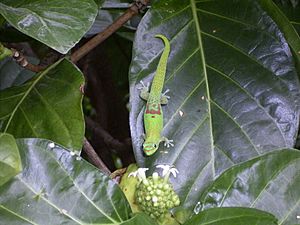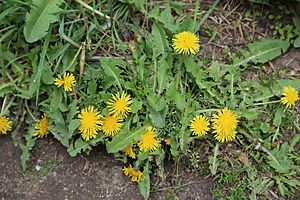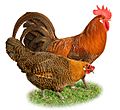Introduced species facts for kids
An introduced species is a living thing, like an animal or plant, that is not originally from a certain place. Humans bring these species to new areas. Sometimes, this can cause big problems. Introduced species can harm the natural environment, called an ecosystem. This harm can affect other animals, plants, and even human activities.
For example, the tilapia is a fish from warm freshwater areas in Africa, North and South America, India, and Sri Lanka. People have moved tilapia to many other places. They are good for fish farming and are also popular aquarium pets.
When tilapia are released into new parts of the world, they can quickly take over. They breed very fast and eat all the available food. They also eat the eggs and babies of fish that are native to that area. This can make the water muddy. Only tilapia can often survive well in these muddy conditions. The tilapia is known as one of the 100 worst introduced species. In Australia, if someone owns or sells a tilapia, they could face a fine of up to AU$11,000.
How Species Are Introduced
Species are introduced in different ways. Many European species were brought to new lands like the Americas and Australia by settlers. In the late 19th century, groups called Acclimatization Societies were even formed to help bring new species over. For example, foxes were brought to many islands in Alaska to create new populations for the fur trade. Species have also been moved between countries on the same continent.
Sometimes, species are introduced by accident. Pets and other domesticated animals can escape or become wild, forming new populations. Cats, for instance, have spread widely. This is partly because people thought they were good at controlling rats. They also make popular pets. Escaped pets are also why you might see wild parrots in cities in North America and Europe.
Other species are introduced completely by accident. Three types of rat (the Black, Norway, and Polynesian rats) spread around the world as "hitchhikers" on ships. Humans helped them travel, but it wasn't on purpose.
It's important to know that species can be introduced within the same continent, not just across oceans. For example, in the United States and Australia, species have been moved from one part of the country to another. These introductions can be just as harmful as those from other continents. Some introductions happened a very long time ago. For instance, rabbits and fallow deer were brought to the United Kingdom hundreds of years ago. Both types of resident rats are also introduced species there.
Introduced Plants and Algae
Many plants that are not native to an area have been brought to new places. People often bring them as ornamental plants to make gardens look nice. They are also used to stop erosion (when soil washes away), to feed farm animals, or for growing trees for wood. At first, it's often hard to know if an introduced plant will become harmful. Many non-native plants stay harmless for years before suddenly spreading and causing problems.
For example, peaches originally came from Persia. Now, they are grown in many parts of the world. Tomatoes are native to the Andes mountains. Squash (like pumpkins), maize (corn), and tobacco are native to the Americas. But they were all brought to the "Old World" (Europe, Asia, and Africa). Many introduced species need humans to help them survive in their new homes. Others might become wild but don't really compete with native plants. They just add to the variety of living things in the area.
Images for kids
-
Cattle (Bos primigenius taurus) were introduced worldwide but are not wild in most places.
-
Wheat (Triticum) was first grown in Mesopotamia and is now grown all over the world.
-
The male Lophura nycthemera (silver pheasant) is from East Asia. It has been brought to parts of Europe as an ornamental bird.
-
The horse chestnut (Aesculus hippocastanum) is native to Greece and the Balkan peninsula. It has been brought to most of Europe and parts of North America as an ornamental plant. It came to the United Kingdom in 1616 and is now found widely across the country. Even though it's not native, its leaves attract insects, which feed native birds.
-
Chickens (Gallus gallus domesticus) are from Asia and have been introduced around the rest of the world.
See also
 In Spanish: Especie introducida para niños
In Spanish: Especie introducida para niños










